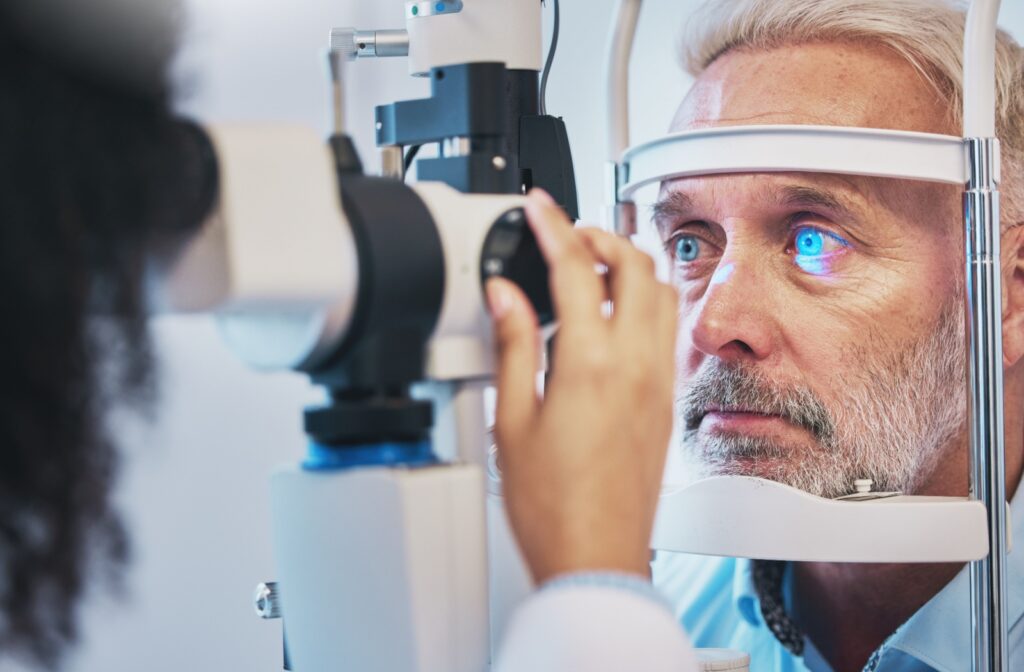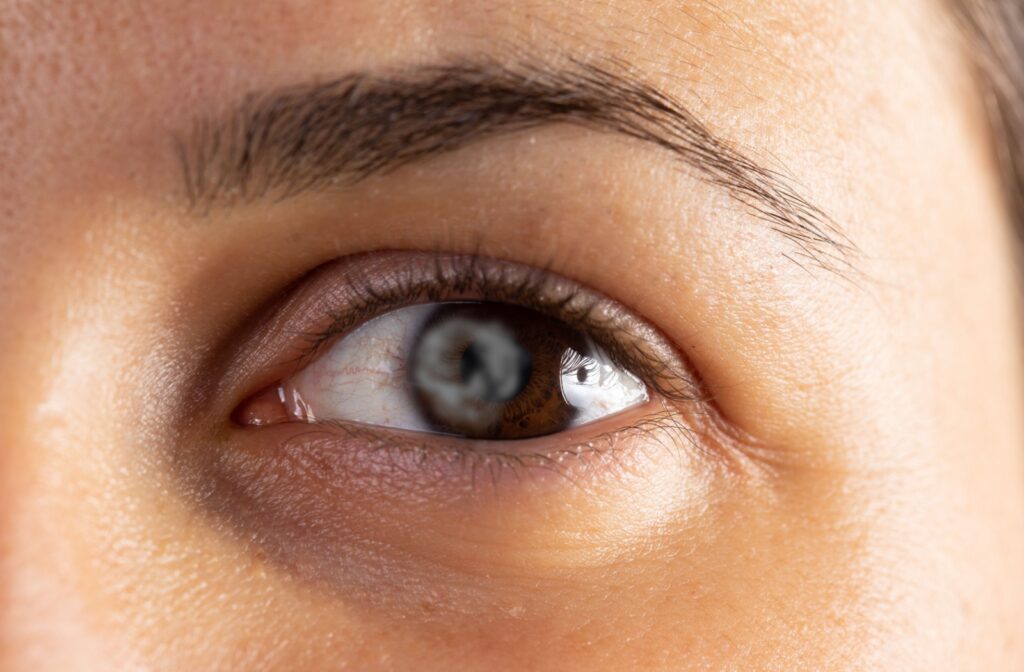Glaucoma is often called the “silent thief of sight” because it can develop slowly and without noticeable symptoms in its early stages. So, what is usually the first sign of glaucoma?
In most cases, it’s a gradual loss of peripheral (side) vision—a subtle change that often goes unnoticed until significant, irreversible damage has occurred. Because symptoms are so mild at first, glaucoma can remain undiagnosed for years without regular eye exams. Early detection is essential because, while lost vision can’t be restored, timely treatment can help slow or even stop the progression of the disease.
What Is Glaucoma?
Glaucoma refers to a group of eye diseases that damage the optic nerve—the critical link between your eyes and brain. This damage is usually related to elevated intraocular pressure (IOP), which builds up when the eye’s fluid drainage system isn’t working properly.
Your eyes constantly produce a fluid called aqueous humour. This fluid circulates and drains through a mesh-like channel. When the channel becomes blocked or inefficient, pressure builds up inside the eye. Over time, this pressure damages the optic nerve and leads to vision loss.
The effects are permanent, so early detection and monitoring are essential for long-term eye health.
Types of Glaucoma
There are several types of glaucoma, and each can affect vision differently.
Open-Angle Glaucoma
This is the most common form. It progresses slowly and painlessly as the eye’s drainage canals become clogged over time. Since there’s no pain or early vision changes, many people are unaware they have it until peripheral vision starts to fade—and by then, the damage is permanent.
Normal-Tension Glaucoma
In normal-tension glaucoma, optic nerve damage occurs despite normal eye pressure. It’s thought to be related to reduced blood flow to the optic nerve or structural weakness in the eye. Genetics play a strong role, so family history increases your risk. Regular eye exams are crucial for detecting this condition, as symptoms are minimal or nonexistent until vision loss occurs.
Angle-Closure Glaucoma
Angle-closure glaucoma is a less common but more urgent form. It happens when the drainage angle in the eye suddenly closes, causing a rapid spike in eye pressure.
Symptoms may include:
- Severe eye pain
- Headache
- Sudden blurry vision or vision loss
- Halos around lights
- Eye redness
- Nausea or vomiting
This is a medical emergency. Without prompt treatment, permanent vision loss can occur within hours.
Secondary Glaucoma
Secondary glaucoma develops as a result of another condition or eye injury. Causes include:
- Inflammation (like uveitis)
- Eye trauma
- Diabetes
- Advanced cataracts
- Steroid use
Two common contributing conditions are pigment dispersion syndrome, where pigment particles clog the drainage angle, and pseudoexfoliation syndrome, where flaky protein material builds up and blocks fluid flow. These can raise eye pressure and lead to optic nerve damage over time.
Congenital Glaucoma
Present at birth, congenital glaucoma occurs when the eye’s drainage system doesn’t form properly. It’s rare, but early signs can include:
- Cloudy corneas
- Excessive tearing
- Sensitivity to light
- Abnormally large eyes
- Irritability or frequent eye rubbing in infants
Early diagnosis and treatment can help protect vision in children.
How Do Your Eyes Look When You Have Glaucoma?
In most types of glaucoma, your eyes will look completely normal—there’s usually no redness, swelling, or visible signs that something is wrong. That’s part of what makes glaucoma so sneaky. However, in certain cases, like angle-closure glaucoma, you may notice redness, pupil changes, or a hazy cornea. These symptoms often come with severe eye pain, blurred vision, and nausea and should be treated as a medical emergency.

How Is Glaucoma Treated?
Glaucoma can’t be cured, but treatment can slow or halt its progression. The primary goal is to lower eye pressure and preserve vision.
Treatment options include:
- Prescription eye drops to reduce fluid production or improve drainage
- Oral medications, often used temporarily during pressure spikes
- Laser therapy, such as selective laser trabeculoplasty (SLT), to enhance fluid outflow
- Surgical procedures, like trabeculectomy or shunt implants, to create new drainage channels
The right treatment depends on the type of glaucoma and how far it has progressed. Long-term monitoring is essential, even if symptoms aren’t noticeable.
Why Regular Eye Exams Matter
Because glaucoma often begins without symptoms, routine eye exams are one of the best ways to catch it early. We can monitor your eye pressure, examine the optic nerve, and perform visual field testing to detect subtle changes.
If you’re over 40, have a family history of glaucoma, or have certain health conditions like diabetes, you may be at higher risk. At EyeCare Niagara, we provide comprehensive eye exams and personalized glaucoma care to help safeguard your vision. If you’re concerned about changes in your eyesight or it’s been a while since your last exam, request an appointment today. Early detection can make all the difference.




